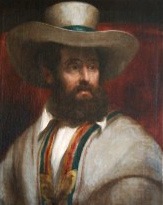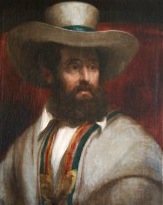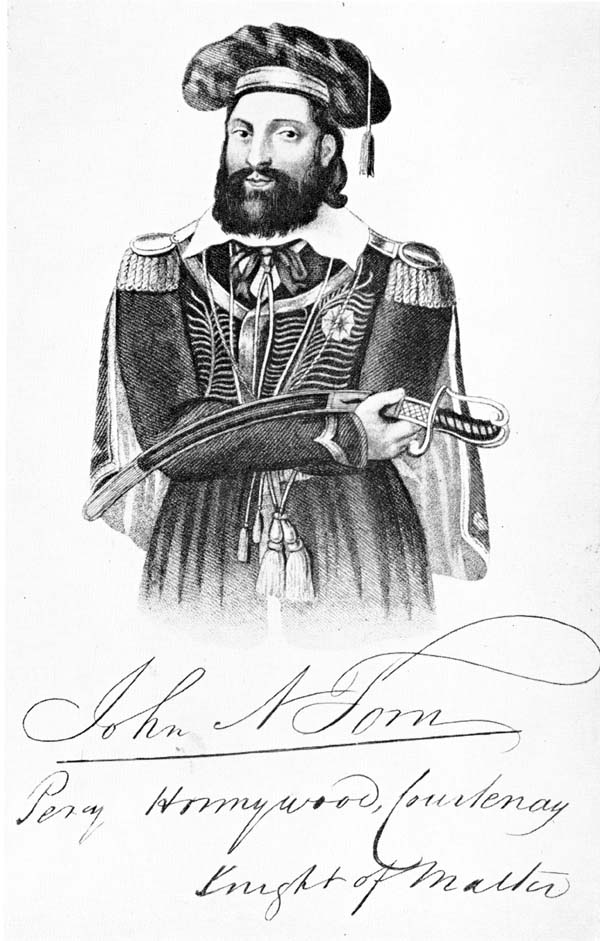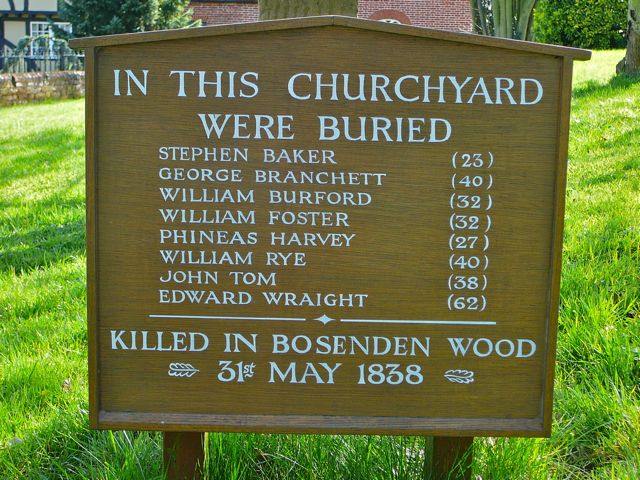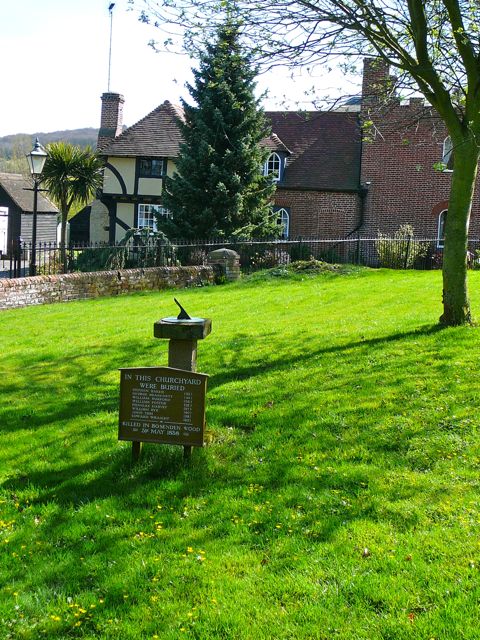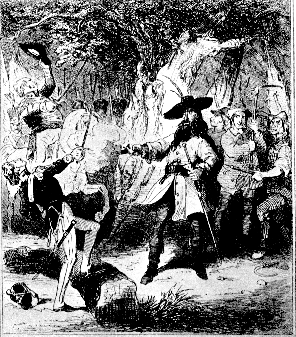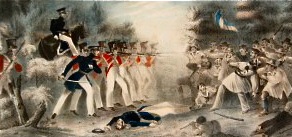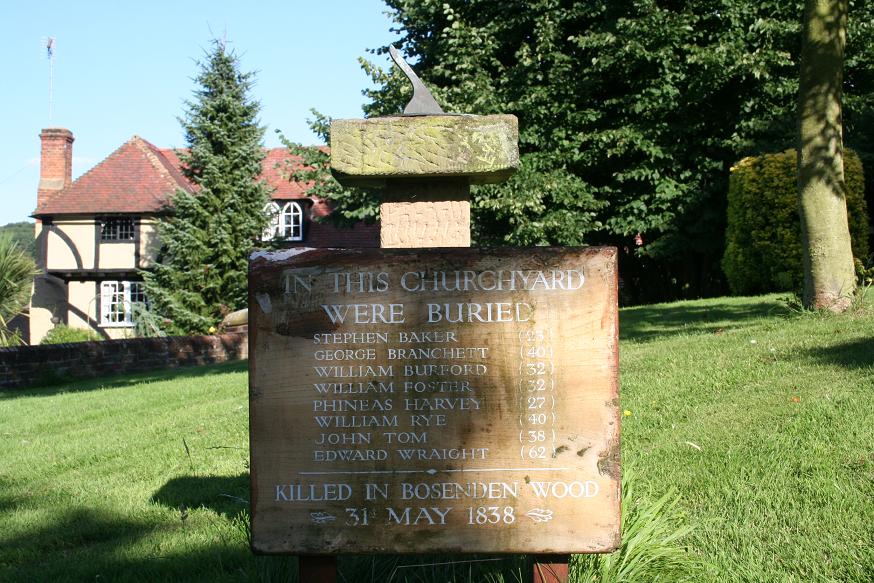On 31 May 1838 150 troops of the 45th Infantry Regiment from Canterbury (the same troops who the following year killed 22 Chartists at Newport in Wales) cornered 'Sir William' and about 35 of his followers in Bossenden Wood. The protestors were mainly middle-aged men armed only with cudgels; only Tom and one other had a gun. Lieutenant Henry Bennett was shot by Tom, the soldiers opened fire, and Tom and seven of his followers were killed, and several more fatally wounded. Some were both shot and bayonetted. Special Constable George Catt, from Faversham, was killed in the crossfire. The rebel casualties were buried in unmarked graves, close to their relatives. A guard was mounted on Tom's grave for several nights after the burial, but in spite of his promises, and the faith of a few surviving believers, he was not resurrected.
This was the last armed uprising on English soil, and so shocked the government of the day that the building of a school and church (Christ Church) at Dunkirk was quickly ordered, to avoid any further unrest among the inhabitants of the impoverished area. The conspirators who survived were mostly pardoned, or given small sentences, and the official story was that they had been foolish ignorant peasants following a dangerously delusional madman. The principal road of the small village that is modern Dunkirk, formerly Old Barn Road, is now called Courtenay Road. Both the church and the school have recently been sold for conversion to private residences.
On 31 May 1838 150 troops of the 45th Infantry Regiment from Canterbury (the same troops who the following year killed 22 Chartists at Newport in Wales) cornered 'Sir William' and about 35 of his followers in Bossenden Wood. The protestors were mainly middle-aged men armed only with cudgels; only Tom and one other had a gun. Lieutenant Henry Bennett was shot by Tom, the soldiers opened fire, and Tom and seven of his followers were killed, and several more fatally wounded. Some were both shot and bayonetted. Special Constable George Catt, from Faversham, was killed in the crossfire. The rebel casualties were buried in unmarked graves, close to their relatives. A guard was mounted on Tom's grave for several nights after the burial, but in spite of his promises, and the faith of a few surviving believers, he was not resurrected.
This was the last armed uprising on English soil, and so shocked the government of the day that the building of a school and church (Christ Church) at Dunkirk was quickly ordered, to avoid any further unrest among the inhabitants of the impoverished area. The conspirators who survived were mostly pardoned, or given small sentences, and the official story was that they had been foolish ignorant peasants following a dangerously delusional madman. The principal road of the small village that is modern Dunkirk, formerly Old Barn Road, is now called Courtenay Road. Both the church and the school have recently been sold for conversion to private residences.
